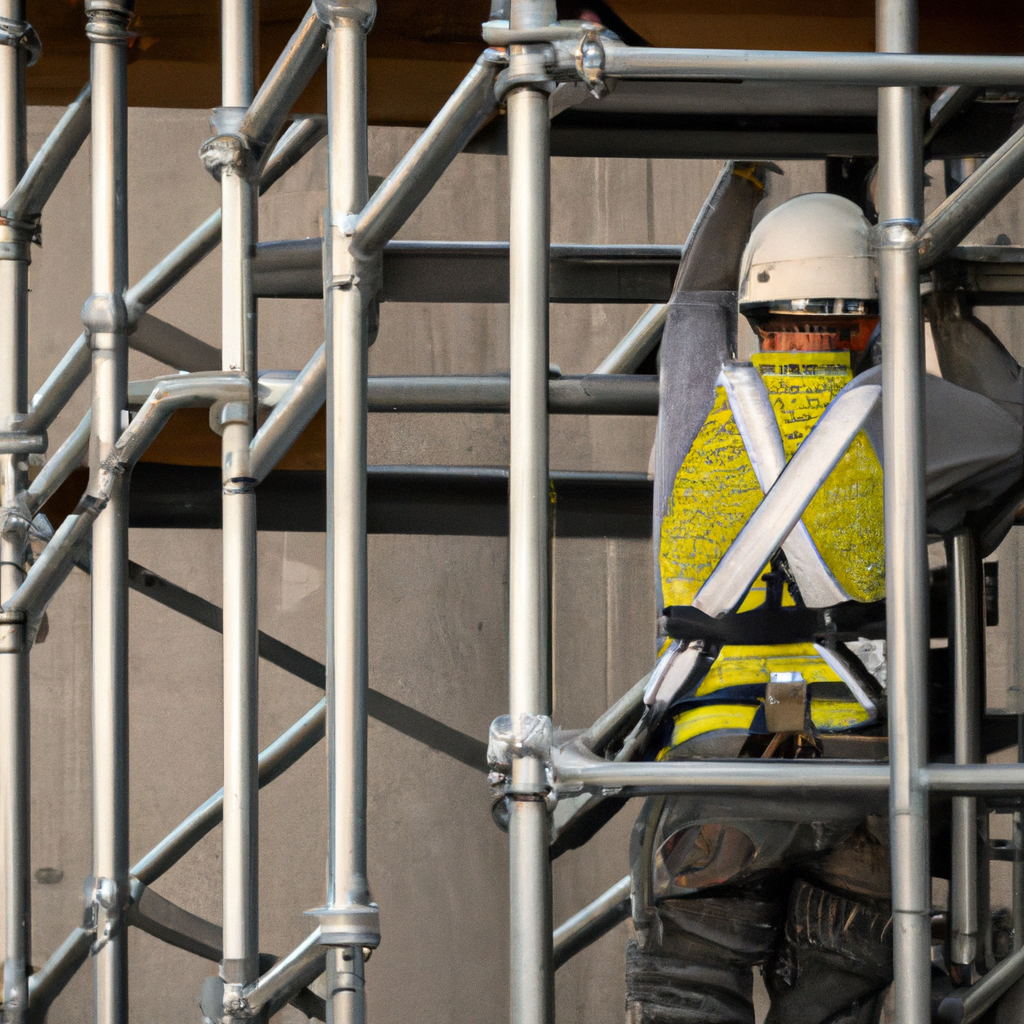Welcome to our comprehensive guide on scaffold safety secrets and the maintenance routine that is often overlooked. As a leading authority in the industry, we understand the importance of maintaining a safe working environment for all workers involved in construction and other related activities. In this article, we will delve into the intricacies of scaffold safety and highlight the key maintenance practices that are crucial for preventing accidents and ensuring the well-being of everyone on the job site.

The Significance of Scaffold Safety
Scaffold safety is of paramount importance in the construction industry, where workers rely on these temporary structures to carry out various tasks at different heights. A well-maintained scaffold not only provides a stable platform for workers but also minimizes the risk of falls, collapses, and other accidents. Proper maintenance plays a crucial role in ensuring the structural integrity of scaffolds and keeping workers safe.
Understanding Scaffold Maintenance
Maintaining a scaffold involves a comprehensive routine that includes regular inspections, repairs, and adherence to safety regulations. Unfortunately, many organizations tend to overlook certain aspects of scaffold maintenance, putting the lives of workers at risk. By understanding these commonly overlooked maintenance practices, you can take proactive steps to ensure the safety of your workers.
Regular Inspections: A Key Aspect of Scaffold Maintenance
Regular inspections are the cornerstone of scaffold safety. It is essential to conduct thorough inspections before each use, as well as periodic inspections throughout the duration of the project. Inspections should focus on identifying any potential hazards, such as loose connections, damaged components, or missing guardrails. Engage qualified professionals to conduct these inspections and ensure that any identified issues are promptly addressed.
Proper Training and Certification
Another crucial aspect of scaffold safety is ensuring that all workers who will be using or erecting scaffolds are properly trained and certified. Workers should receive comprehensive training on scaffold assembly, usage, and dismantling, as well as instruction on fall protection measures and emergency procedures. By investing in proper training, you equip your workforce with the knowledge and skills necessary to carry out their tasks safely.
Regular Cleaning and Maintenance
Scaffold components are exposed to various elements, including dust, debris, and weather conditions. Regular cleaning is essential to remove any substances that may compromise the integrity of the scaffold. Additionally, proper maintenance should include lubrication of moving parts, such as pulleys and ropes, to ensure smooth operation and prevent unnecessary wear and tear.
Load Capacity Assessment
Before using a scaffold, it is crucial to determine its load capacity. Overloading a scaffold can lead to structural failure and accidents. Consult the manufacturer’s guidelines or engage a structural engineer to assess the load capacity and ensure that it aligns with the intended use. Regularly check for any signs of excessive loading, such as sagging or bending, and take immediate action to rectify the situation.
Weather Considerations
Weather conditions can significantly impact the stability of scaffolds. High winds, rain, or snow can weaken the structure or make it slippery, increasing the risk of accidents. It is essential to monitor weather forecasts and take appropriate precautions when adverse conditions are expected. This may include securing the scaffold, providing additional bracing, or temporarily suspending work until conditions improve.
Documentation and Record-Keeping
Maintaining accurate documentation and records of scaffold inspections, repairs, and training is crucial for regulatory compliance and liability purposes. Proper record-keeping allows you to track maintenance activities, identify trends, and demonstrate your commitment to safety. It also provides valuable information for future reference and enables you to address any recurring issues promptly.
Ongoing Training and Communication
Scaffold safety is not a one-time effort; it requires ongoing training and communication. Regularly update your workers on safety protocols, industry best practices, and any changes in regulations. Encourage open communication, where workers can report any safety concerns or suggest improvements. Foster a culture of safety within your organization to ensure that everyone is invested in maintaining a safe working environment.
Conclusion
In conclusion, scaffold safety is a crucial aspect of any construction project. By implementing a robust maintenance routine and paying attention to the often overlooked practices, you can significantly reduce the risk of accidents and injuries. Regular inspections, proper training, cleaning and maintenance, load capacity assessment, weather considerations, documentation, and ongoing training and communication are all vital components of an effective scaffold maintenance program. Prioritize scaffold safety, and you will create a work environment that is not only compliant with regulations but also prioritizes the well-being of your workers. Remember, safety should always be the top priority on any job site.


